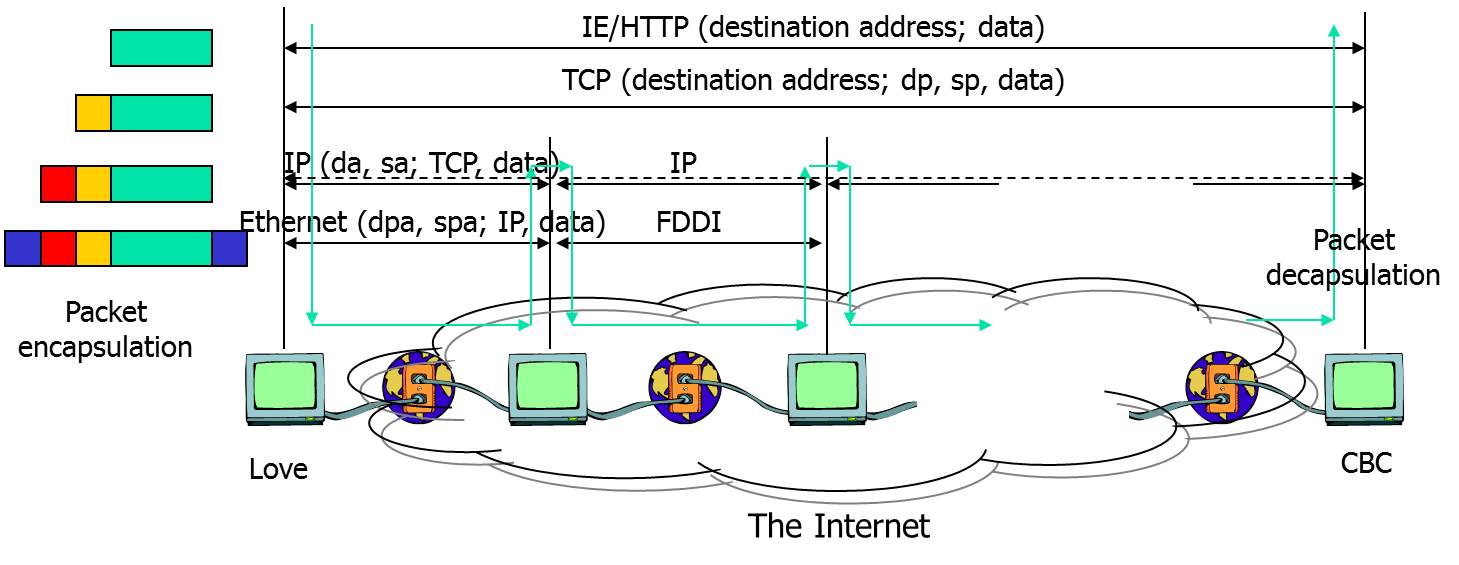3.2 How to deliver BITs

- Basic idea
- What can go through transmission medium, such as copper line, optical fiber, and space?
Electric or electromagnetic signals
- How to transform bits to signals?
Encoding/decoding
- In which layer?
Physical layer
- Data and signals
- Study all in Data and Signals.
- [Review]
- Interpret three characteristics of a sine wave.
- Explain the basic idea of encoding/decoding.
- Define the time domain plot and the frequency domain plot.
- Interpret a composite signal.
- Interpret the concept of bandwidth.
- Relate the bandwidth of a signal and the bandwidth of a transmission medium when data is transmitted.
- List the types of noise.
- Use decibel to calculate the attenuation of a signal.
- Use Nyquist bit rate formula and Shannon capacity formula to determine the appropriate bit rate and signal level when a channel is given.
- Interpret the concept of bandwidth-delay product.
- Digital transmission - encoding/decoding
- Study all in Digital Transmission.
- [Review]
- Determine the baud rate from a given bit rate and the number of signal elements for sending one bit, assuming line coding.
- Identify the three problems caused by a long string of 0s and 1s.
- Explain the basic idea to solve the above three problems.
- Identify advantages and disadvantages of Manchester and differential Manchester line coding schemes, comparing to NRZ coding scheme.
- Describe the motivation of block coding.
- Describe the basic idea of PCM that converts an analog signal to digital data.
- Use of the Nyquist Theorem to decide the minimum sampling rate.
- Distinguish parallel and serial transmission modes.
- Analog transmission - encoding/decoding
- Study all in Analog Transmission.
- [Review]
- Given a bandwidth and the number of signal elements to carry a bit, determine the bit rate, for various types of ASK, FSK, PSK and QAM.
- Given a bit rate and a bandwidth, design a QAM (or other conversion type) scheme to meet the given requirements.
- List the advantages and disadvantages of AM and FM respectively.
- Bandwidth utilization - how to share transmission media
- Study all in Bandwidth Utilization.
- [Review]
- Use of Frequency-Division Multiplexing to transfer multiple channels.
- Use of Synchronous Time-Division Multiplexing to transfer multiple channels, with or without synchronization bit.
- Use of Synchronous Time-Division Multiplexing to transfer multiple channels, when the inputs have different transmission rates.
- Transmission media
- Study all in Transmission Media.
- [Review]
- List the three types of guided media.
- State the reason why higher frequency radio band can transfer more data.
